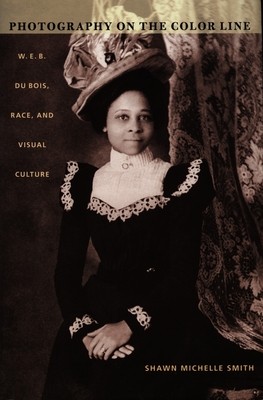
- We will send in 10–14 business days.
- Author: Shawn Michelle Smith
- Publisher: Duke University Press
- ISBN-10: 0822333430
- ISBN-13: 9780822333432
- Format: 15.3 x 23 x 1.6 cm, softcover
- Language: English
- SAVE -10% with code: EXTRA
Reviews
Description
Through a rich interpretation of the remarkable photographs W. E. B. Du Bois compiled for the American Negro Exhibit at the 1900 Paris Exposition, Shawn Michelle Smith reveals the visual dimension of the color line that Du Bois famously called "the problem of the twentieth century." Du Bois's prize-winning exhibit consisted of three albums together containing 363 black-and-white photographs, mostly of middle-class African Americans from Atlanta and other parts of Georgia. Smith provides an extensive analysis of the images, the antiracist message Du Bois conveyed by collecting and displaying them, and their connection to his critical thought. She contends that Du Bois was an early visual theorist of race and racism and demonstrates how such an understanding makes the important concepts he developed-including double consciousness, the color line, the Veil, and second sight-available to visual culture and African American studies scholars in powerful new ways.
Smith reads Du Bois's photographs in relation to other turn-of-the-century images such as scientific typologies, criminal mugshots, racist caricatures, and lynching photographs. By juxtaposing these images with reproductions from Du Bois's exhibition archive, Smith shows how Du Bois deliberately challenged racist representations of African Americans. Emphasizing the importance of comparing multiple visual archives, Photography on the Color Line reinvigorates understandings of the stakes of representation and the fundamental connections between race and visual culture in the United States.
EXTRA 10 % discount with code: EXTRA
The promotion ends in 17d.19:22:21
The discount code is valid when purchasing from 10 €. Discounts do not stack.
- Author: Shawn Michelle Smith
- Publisher: Duke University Press
- ISBN-10: 0822333430
- ISBN-13: 9780822333432
- Format: 15.3 x 23 x 1.6 cm, softcover
- Language: English English
Through a rich interpretation of the remarkable photographs W. E. B. Du Bois compiled for the American Negro Exhibit at the 1900 Paris Exposition, Shawn Michelle Smith reveals the visual dimension of the color line that Du Bois famously called "the problem of the twentieth century." Du Bois's prize-winning exhibit consisted of three albums together containing 363 black-and-white photographs, mostly of middle-class African Americans from Atlanta and other parts of Georgia. Smith provides an extensive analysis of the images, the antiracist message Du Bois conveyed by collecting and displaying them, and their connection to his critical thought. She contends that Du Bois was an early visual theorist of race and racism and demonstrates how such an understanding makes the important concepts he developed-including double consciousness, the color line, the Veil, and second sight-available to visual culture and African American studies scholars in powerful new ways.
Smith reads Du Bois's photographs in relation to other turn-of-the-century images such as scientific typologies, criminal mugshots, racist caricatures, and lynching photographs. By juxtaposing these images with reproductions from Du Bois's exhibition archive, Smith shows how Du Bois deliberately challenged racist representations of African Americans. Emphasizing the importance of comparing multiple visual archives, Photography on the Color Line reinvigorates understandings of the stakes of representation and the fundamental connections between race and visual culture in the United States.


Reviews